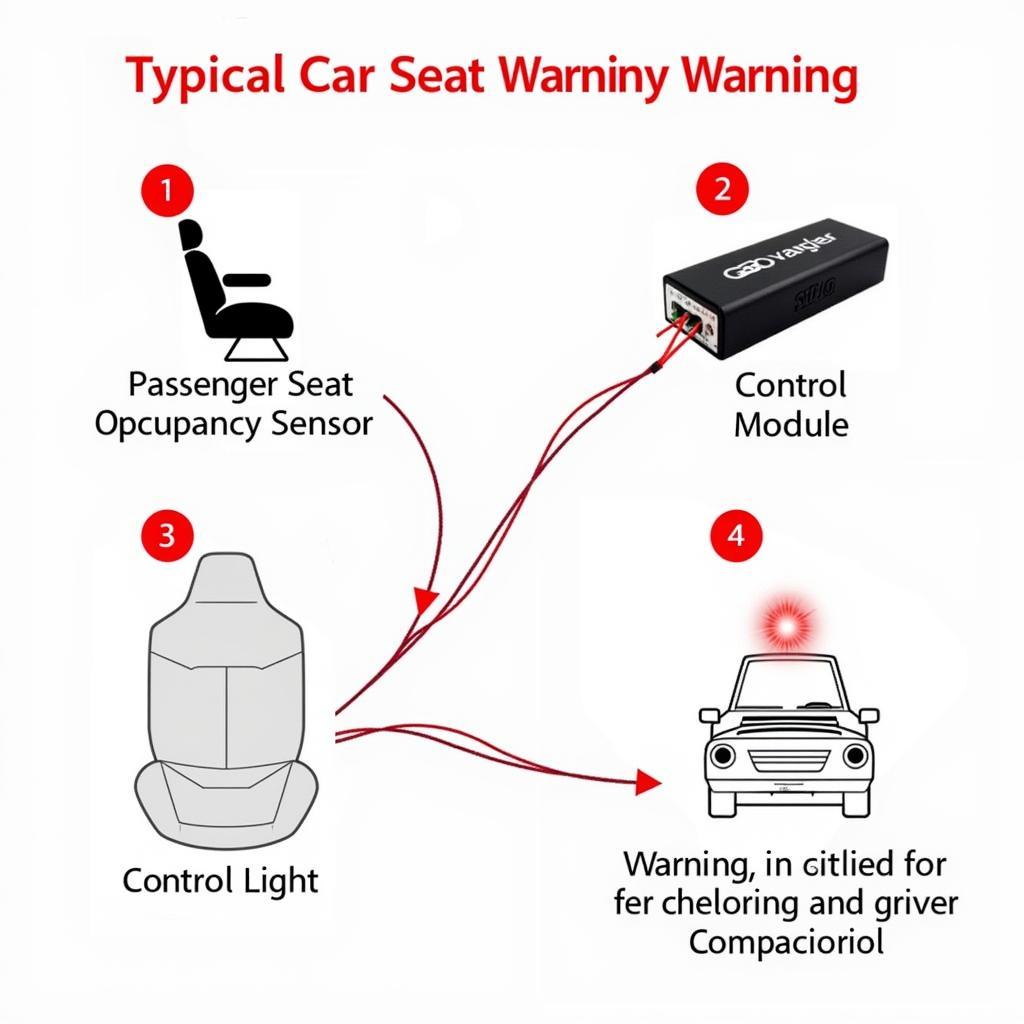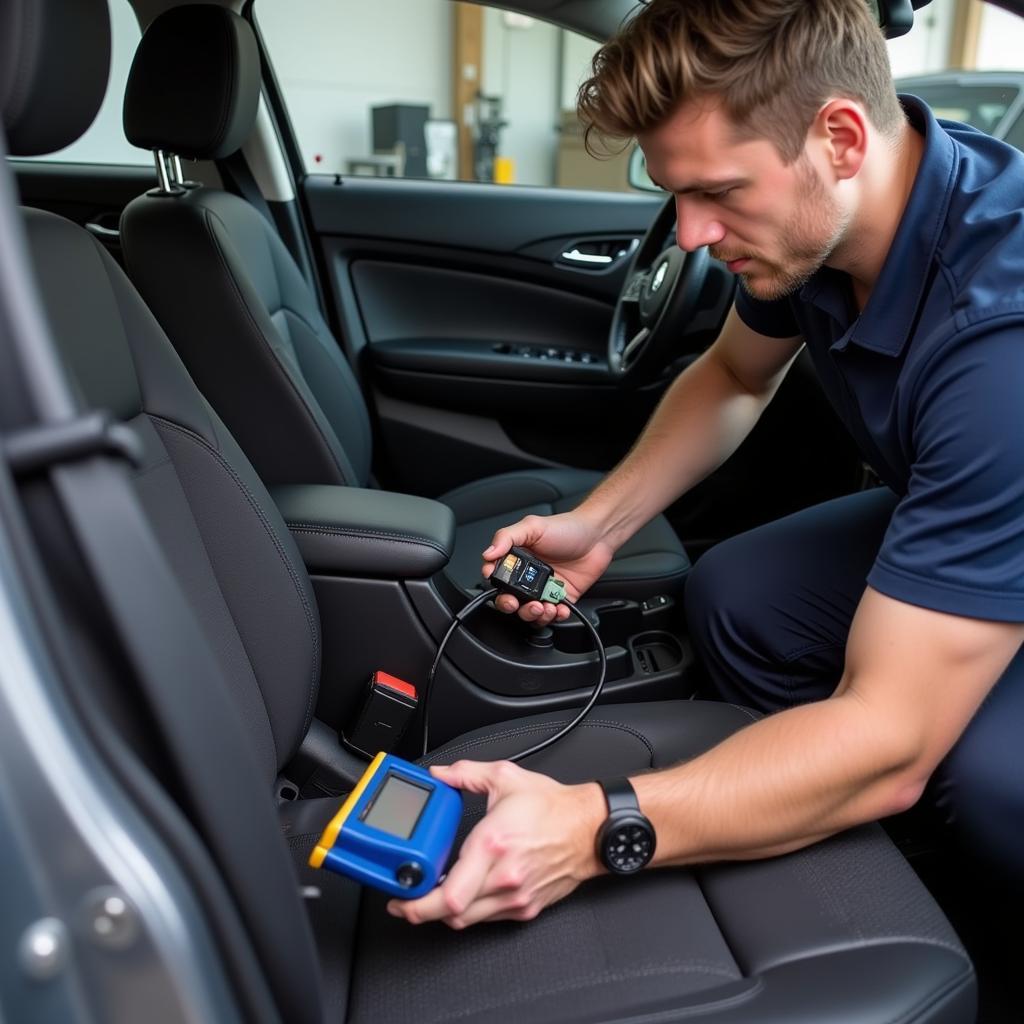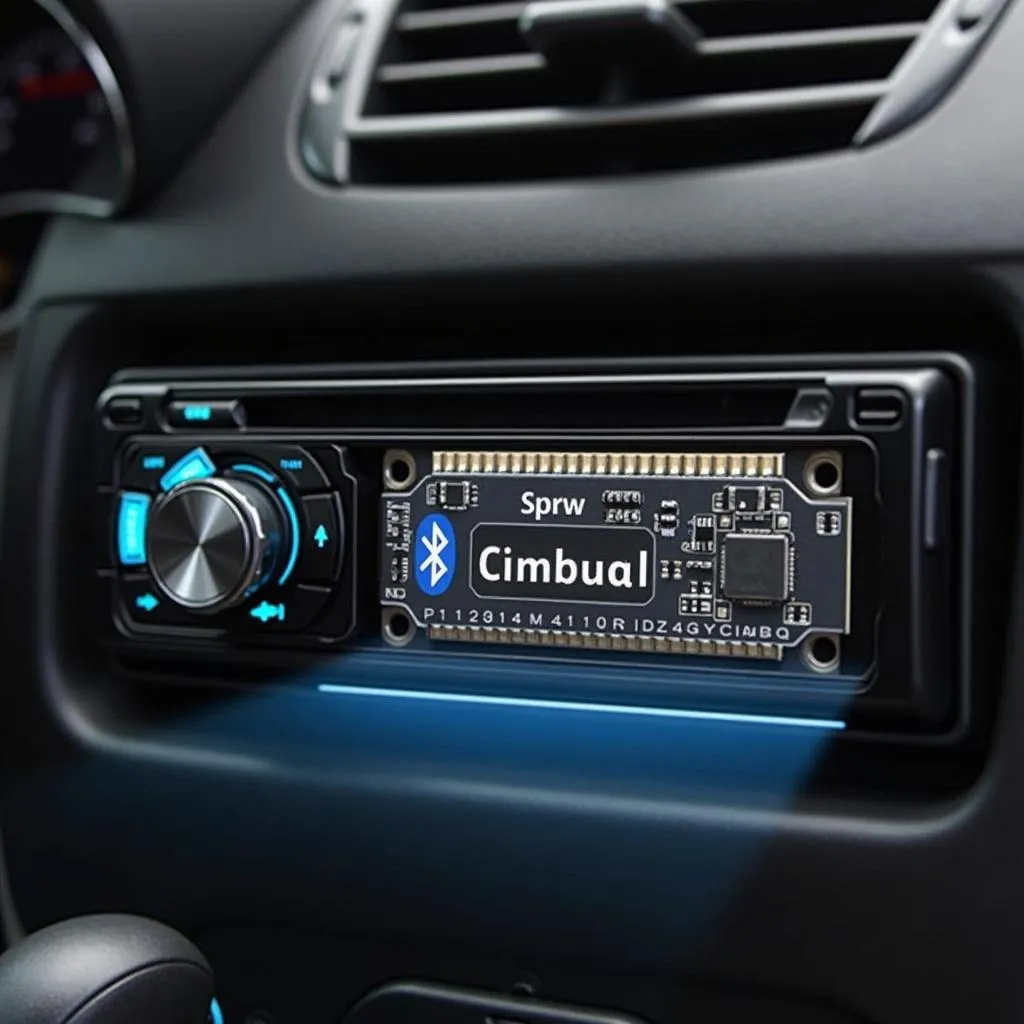A car seat warning device is a safety feature in modern vehicles that alerts the driver if a passenger is sitting in the front passenger seat and the airbag is deactivated. This is primarily to prevent the airbag from deploying and potentially harming a child or small-statured person. When the system detects weight in the passenger seat, it triggers a warning light on the dashboard and often an audible chime.
While this safety feature is paramount, it can sometimes malfunction and trigger false warnings. This article aims to help you understand car seat warning devices, troubleshoot common issues, and learn about potential solutions.
Understanding How the System Works
 Car Seat Warning System Components
Car Seat Warning System Components
Most car seat warning systems rely on a weight sensor embedded within the passenger seat. This sensor, also known as a bladder sensor or pressure sensor, detects pressure exerted on the seat. When the pressure exceeds a specific threshold, typically indicating an adult passenger, the system considers the seat occupied. Some advanced systems might also employ occupant classification sensors to differentiate between adults, children, and child seats.
Common Car Seat Warning Device Problems
Several factors can cause a car seat warning device to malfunction and display inaccurate warnings. Here are some common culprits:
- Faulty Passenger Occupancy Sensor: A malfunctioning sensor can send incorrect signals to the car’s computer, leading to false warnings. This could be due to wear and tear, exposure to moisture, or electrical issues.
- Damaged Wiring: The wiring connecting the sensor to the car’s system can get damaged due to wear, rodent damage, or improper installation of aftermarket accessories. This can disrupt the signal flow and trigger false warnings.
- Software Glitch: Like any electronic system, the car’s software can encounter glitches that affect the seat warning system. This might necessitate a software update from the manufacturer.
- Aftermarket Seat Covers: Thick or bulky aftermarket seat covers can interfere with the pressure sensor’s ability to detect weight accurately, leading to false positives.
 Diagnosing Car Seat Warning Light Issue
Diagnosing Car Seat Warning Light Issue
Troubleshooting and Solutions
If you’re experiencing issues with your car seat warning device, here’s a step-by-step guide to help you troubleshoot and potentially resolve the problem:
- Check for Obvious Signs: Begin by inspecting the passenger seat for any visible signs of damage or loose connections. Check the wiring beneath the seat for any cuts, fraying, or signs of rodent activity.
- Inspect Seat Covers: Remove any aftermarket seat covers, especially if they are thick or bulky. These covers can interfere with the pressure sensor and trigger false warnings.
- Consult Your Owner’s Manual: Your car’s owner’s manual is a valuable resource for understanding the specific warning lights and messages related to the seat warning system. It may offer troubleshooting tips or recommend specific actions based on the warning message displayed.
- Try a System Reset: Disconnecting the car’s battery for a few minutes can sometimes reset the system and clear temporary glitches. However, this should be done cautiously, referring to your owner’s manual for guidance.
- Utilize Diagnostic Tools: Modern vehicles often store diagnostic trouble codes (DTCs) when a system malfunctions. You can use an OBD-II scanner, a device readily available online or at auto parts stores, to read these codes and pinpoint the issue.
- Seek Professional Help: If basic troubleshooting doesn’t resolve the issue or you’re uncomfortable dealing with electrical components, it’s best to seek help from a qualified mechanic or your dealership. They have the expertise and tools to diagnose and repair the problem effectively.
Importance of Addressing the Issue
A malfunctioning car seat warning device can be more than just an annoyance; it can have serious safety implications. If the system is not functioning correctly, it might not deactivate the airbag when a child or small-statured person is in the passenger seat, putting them at risk of injury in the event of an accident.
Additionally, ignoring a persistent warning light might mask other potential issues with your car’s safety systems.
“Ignoring any warning light related to your car’s safety systems is like turning a blind eye to potential danger,” says John Smith, a senior automotive electrical engineer with over 20 years of experience. “These systems are there to protect you and your passengers. Addressing any issue promptly ensures optimal safety.”
Remote Diagnostics and Programming: The Future of Car Repair
 Remote Diagnostics for Car Repair
Remote Diagnostics for Car Repair
The automotive industry is rapidly evolving, with technology playing an increasingly crucial role. Remote diagnostics and programming are emerging as game-changers, enabling mechanics to diagnose and sometimes even repair issues remotely. In the context of car seat warning devices, remote diagnostics can help identify software glitches or sensor malfunctions without needing a physical visit to the repair shop.
While this technology is still in its early stages, it holds immense potential for making car repairs more convenient and efficient. As vehicles become more connected, we can expect to see even more innovative applications of remote diagnostics and programming in the future.
Conclusion
The car seat warning device is a crucial safety feature that plays a vital role in protecting passengers. Understanding how the system works, being aware of common issues, and knowing how to troubleshoot them can help you ensure your vehicle’s safety features are always in optimal condition.
Remember, when it comes to safety, it’s always best to err on the side of caution. If you encounter persistent issues with your car seat warning device, don’t hesitate to seek professional assistance from a qualified mechanic or your dealership.
FAQs about Car Seat Warning Devices:
-
Can I disable the car seat warning device myself? Tampering with safety systems is highly discouraged and potentially illegal. It’s best to consult a professional mechanic or your dealership for any concerns related to disabling safety features.
-
Why is the warning light blinking even when the passenger seat is empty? A blinking light often indicates a system malfunction. This could be due to a faulty sensor, wiring issue, or software glitch. It’s essential to diagnose and address the issue promptly.
-
How do I know if my car seat warning device needs repair? Persistent false warnings, a blinking warning light, or any unusual behavior of the system are signs that it might need repair.
-
Can a software update fix problems with my car seat warning device? Yes, sometimes a software update from the manufacturer can address software glitches affecting the system’s functionality.
-
Does my car insurance cover repairs related to the car seat warning device? Coverage varies depending on your insurance policy. It’s best to contact your insurance provider for specific details regarding coverage for safety system repairs.

